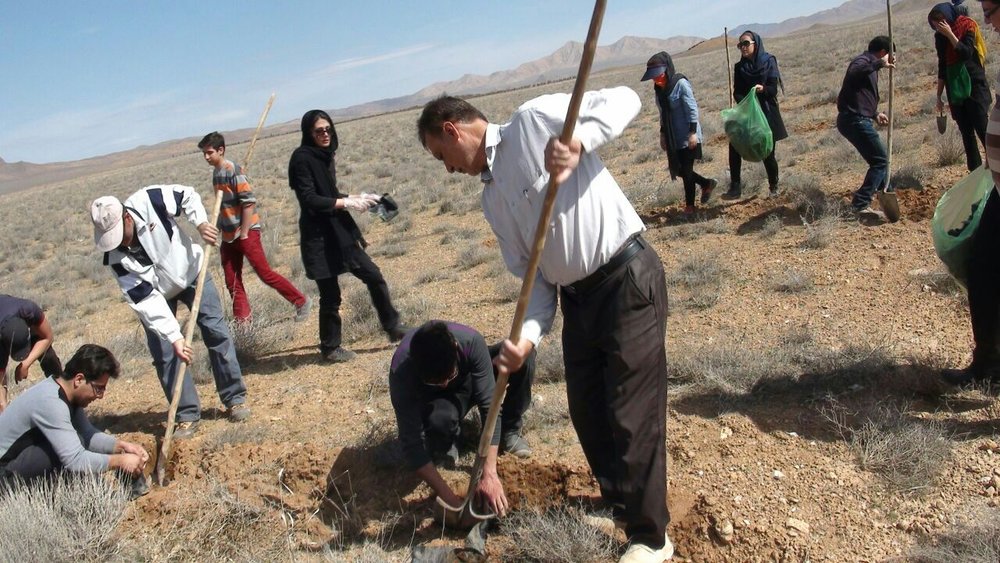Arba’een green belt to help tackle sandstorms

TEHRAN — Iranian pilgrims destined for the holy city of Karbala planted saplings in border regions of the western province of Ilam, hoping to help tackle the daunting predicament of sandstorms.
Some 15 kilometers of the border regions are planted with low-water and drought-resistant saplings, Masoumeh Ebtekar, chief of the Department of Environment, said.
The scheme which is called ‘Arba’een green belt’ can also set the scene for reducing hotspots for sandstorms by planting saplings, Ebtekar noted.
Those interested pilgrims can receive the saplings and plant them under experts’ supervision and the province natural resources organizations would be in charge of taking care of the trees, she said.
“Arba’een pilgrimage which has turned into a big regional and international event for some years now is a great opportunity to convey various messages one of which could be motivating the public to protect the environment that is also in close affinity with our religious instructions,” she added.
Wars can be pretty much destructive to the environment and along with challenges such as climate change and long term droughts can intensify sand storms, she regretted.
Ebtekar went on to say that unfortunately despite previously signed memorandums of understanding with the Iraqi government war has procrastinated any environmental cooperation between Iran and Iraq.
Hopefully, Arba’een green belt scheme can be the first step to take further measures to tackle the sand storms, she suggested.
Recurrent dust storms have become a matter of serious concern for Iran. The detrimental dust particles keep on haunting western and southern cities of Iran and sometimes become the unwelcome guests of central cities of the country as well.
Sand and dust storms hotspots are mostly located in neighboring countries and unfortunately wars and mismanagement of water resources has so far slowed down the progress.
MQ/MG
